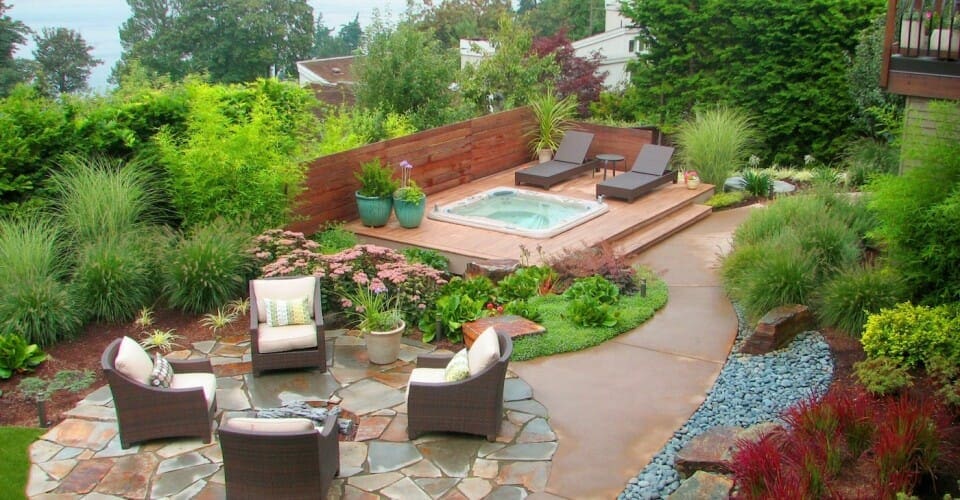
Image Source- Google
Remodeling your landscaping in San Diego provides a great opportunity to not only enhance the beauty of your outdoor space but also to make it more eco-friendly and sustainable. You may navigate through this link to find expert landscape remodelers in San Diego.
By implementing some simple tips and techniques, you can create a landscape that is not only visually appealing but also reduces your environmental impact. Here are some eco-friendly tips for your San Diego remodel:
1. Choose Native Plants
One of the best ways to ensure a sustainable landscape is to choose native plants. Native plants are well adapted to the local climate and soil conditions, which means they require less water, fertilizer, and maintenance. They also provide habitat for local wildlife, which can help promote biodiversity in your garden.
Benefits of using native plants:
- Require less water
- Need less maintenance
- Promote biodiversity
- Attract local wildlife
2. Install Drought-Tolerant Plants
San Diego is known for its dry climate, so it's important to choose plants that are drought-tolerant. These plants are able to survive with minimal water, making them ideal for water conservation and sustainable landscaping. By incorporating drought-tolerant plants into your garden, you can reduce your water usage and create a more resilient landscape.
Types of drought-tolerant plants:
- Succulents
- Lavender
- California poppies
- Agave
3. Implement Water-Saving Techniques
Water conservation is crucial in San Diego, where water resources are limited. By implementing water-saving techniques in your landscape, you can reduce your water usage and lower your utility bills. Some effective water-saving techniques include:
Water-saving techniques:
- Use drip irrigation systems
- Collect rainwater in a barrel
- Mulch around plants to retain moisture
- Group plants with similar water needs together
4. Compost and Mulch
Composting and mulching are excellent practices for sustainable landscaping. Compost adds nutrients to the soil, reduces the need for chemical fertilizers, and improves soil structure. Mulch helps retain moisture, suppresses weeds, and insulates plant roots. By composting kitchen scraps and yard waste and mulching your garden beds, you can create a healthier and more sustainable landscape.
Benefits of composting and mulching:
- Reduce the need for chemical fertilizers
- Improve soil structure
- Retain moisture in the soil
- Suppress weeds
5. Choose Permeable Hardscaping Materials
When redesigning your outdoor space, consider using permeable hardscaping materials such as gravel, permeable pavers, or decomposed granite. These materials allow water to penetrate the soil, reducing runoff and helping to recharge groundwater. Permeable hardscaping can also prevent erosion and reduce the risk of flooding during heavy rains.
Benefits of permeable hardscaping materials:
- Reduce runoff and recharge groundwater
- Prevent erosion
- Minimize flood risk
6. Opt for Energy-Efficient Outdoor Lighting
Lighting your outdoor space is essential for both aesthetics and functionality. However, traditional outdoor lighting can be energy-intensive and contribute to light pollution. Opt for energy-efficient outdoor lighting options such as LED fixtures and solar-powered lights. These options are not only eco-friendly but also cost-effective in the long run.
Types of energy-efficient outdoor lighting:
- LED fixtures
- Solar-powered lights
- Motion sensor lights
7. Create Wildlife-Friendly Habitats
Enhance the ecological value of your landscape by creating wildlife-friendly habitats. Include features such as bird feeders, bird baths, and butterfly gardens to attract local wildlife to your garden. By supporting biodiversity and providing habitats for pollinators and other beneficial creatures, you can contribute to a healthier ecosystem.
Features for wildlife-friendly habitats:
- Bird feeders
- Bird baths
- Butterfly gardens
- Bee hotels
By incorporating these eco-friendly tips into your San Diego landscape remodel, you can create a sustainable outdoor space that is not only beautiful but also beneficial for the environment. From choosing native plants to implementing water-saving techniques, there are many ways to make your landscaping more eco-friendly. Start your sustainable landscaping project today and enjoy a greener and more sustainable outdoor space!